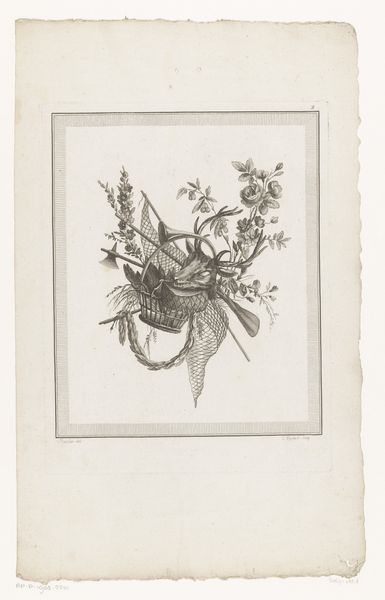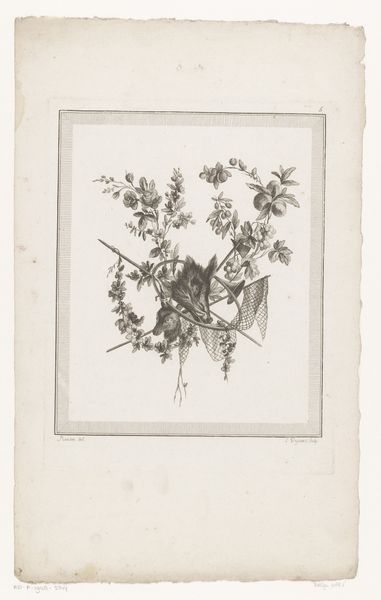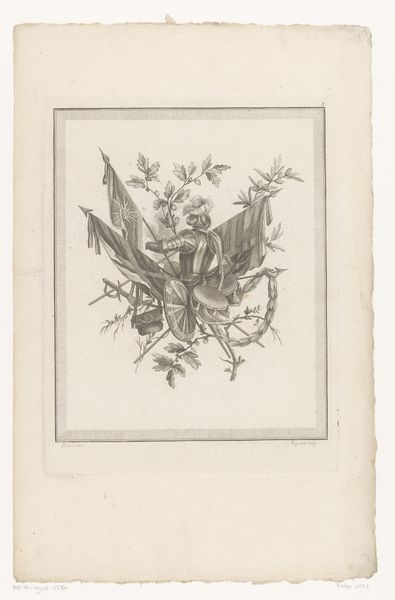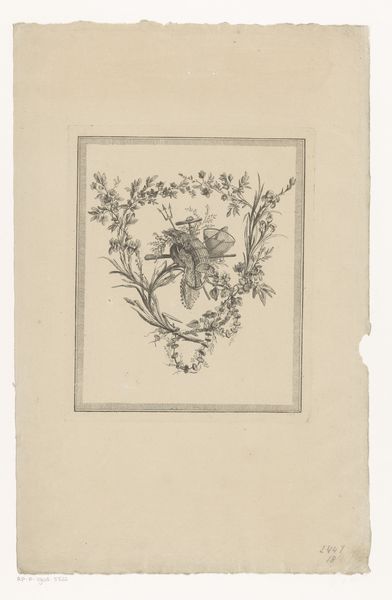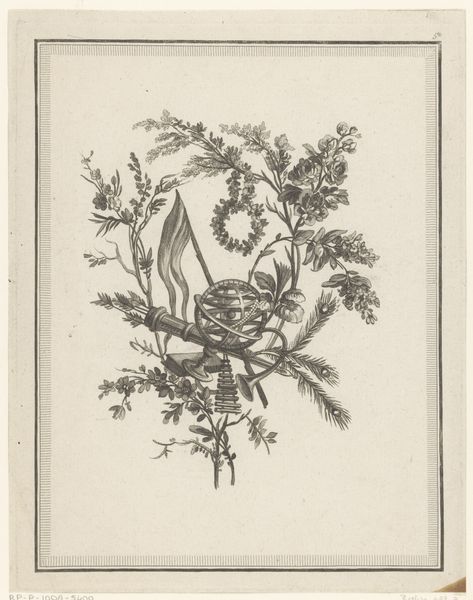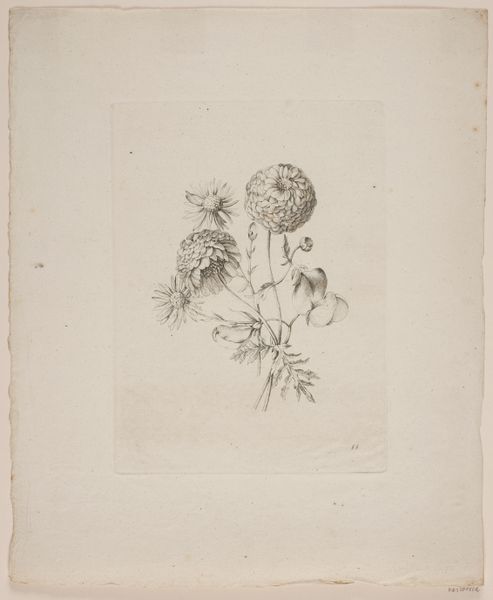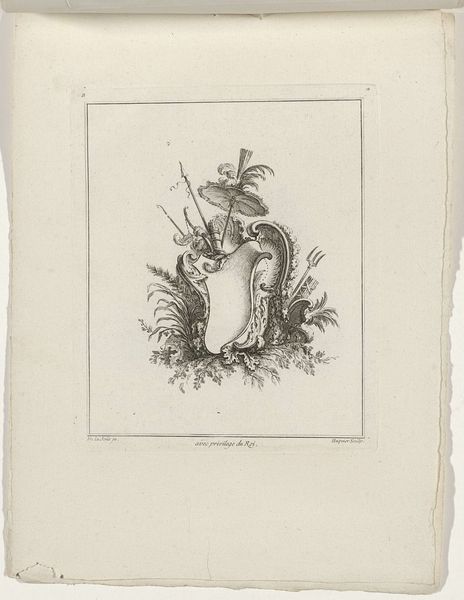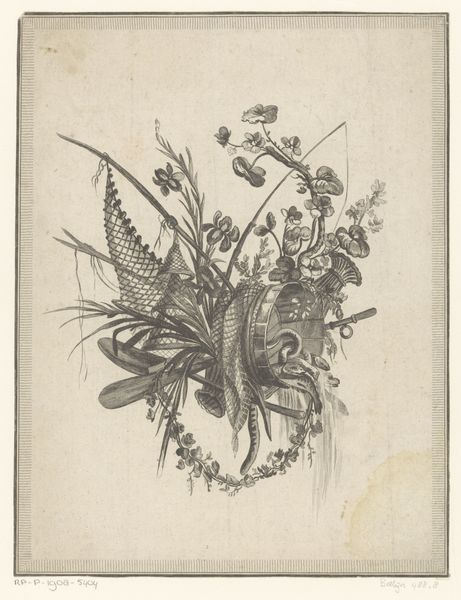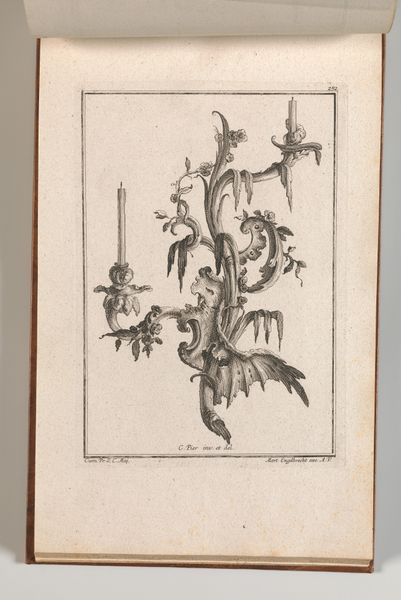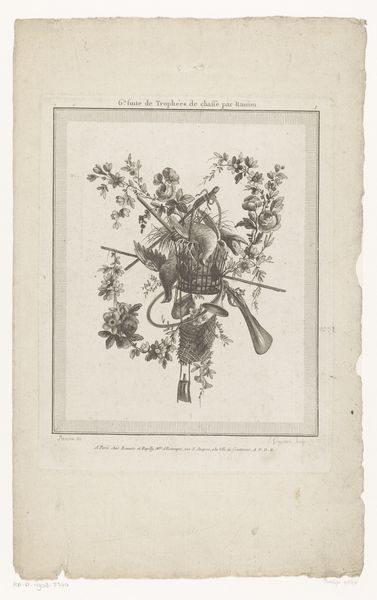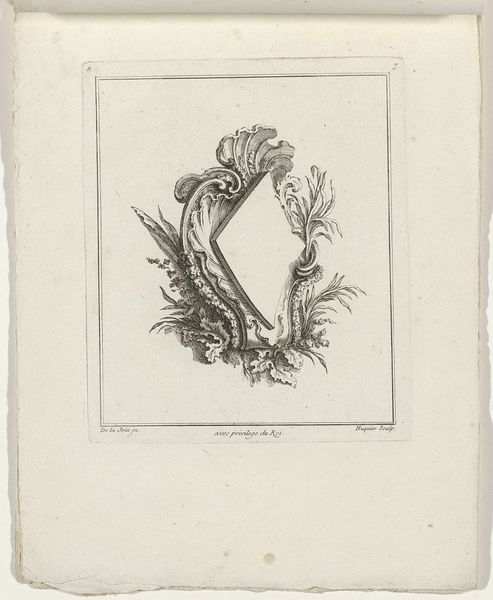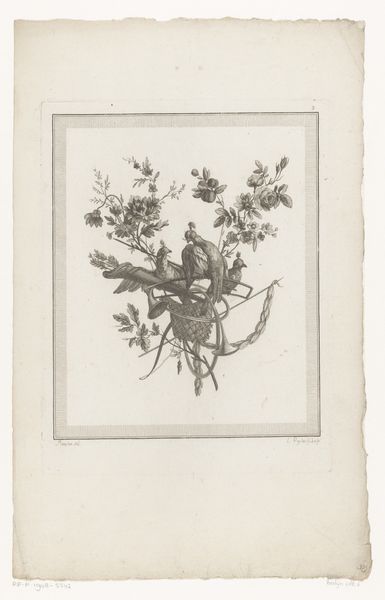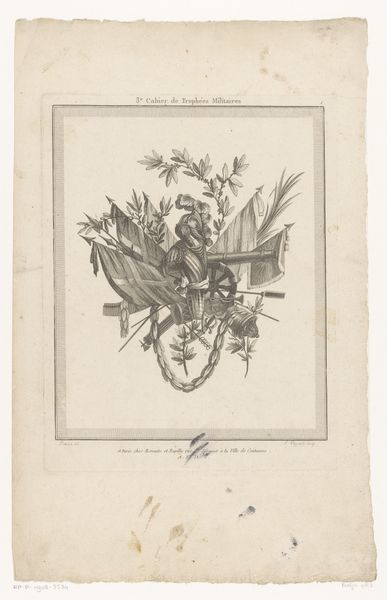
Dimensions: height 283 mm, width 221 mm
Copyright: Rijks Museum: Open Domain
Editor: Here we have Etienne Claude Voysard’s “Jachttrofee,” made in 1778. It's an engraving, a medium I don’t often consider. I’m initially struck by the contrast: such delicate floral elements combined with, well, implements of the hunt and the hunted. What do you see in this piece that perhaps I’m missing? Curator: What immediately grabs me is how this decorative art object serves as a document of social and political power. Hunting trophies, even depicted, were rarely about 'sport' for everyone. Instead, who has access, who can wield these objects--those arrows, nets, even the hunting horn--speaks volumes about class and privilege in the late 18th century. Editor: So it’s less about the artistic composition itself and more about what it represents culturally? Curator: Precisely. The "trophy" aspect inherently connects to the subjugation of nature, doesn’t it? And within that, consider what it means to showcase dead animals. Does it elicit a sense of victory, or perhaps something more sinister when we consider current ecological crises rooted in such a mindset? Editor: I see your point. This artwork, pretty as it may seem at first glance, is entangled with complex power dynamics. Curator: And doesn't that make it all the more interesting? To grapple with beauty that stems from a history rife with exploitation and domination? Editor: Absolutely. I initially saw it as a beautiful decorative piece, but now I realize there are far more important stories layered within it. Thank you! Curator: My pleasure. Hopefully, this prompts you and our listeners to look beyond the surface of art.
Comments
No comments
Be the first to comment and join the conversation on the ultimate creative platform.
